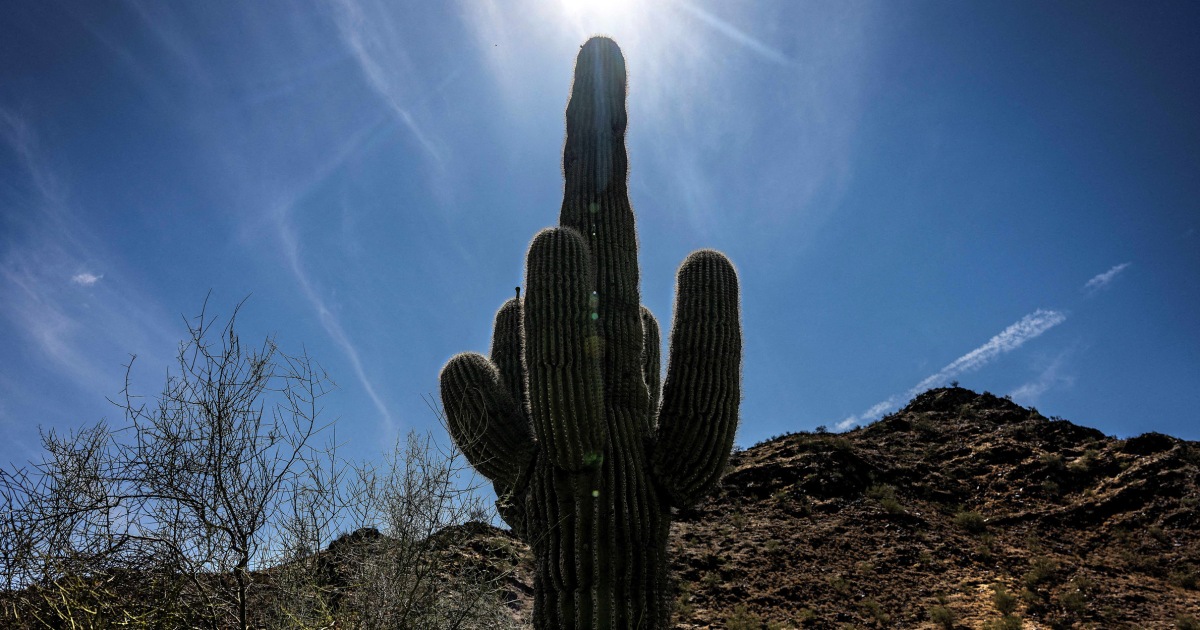“It’s just amazing how long it has gone on without any sort of break,” Brady said. “It has been unending. And that makes you wonder: How can people live with this much sustained heat?”
Cooling centers, hydration stations and other heat relief efforts in Phoenix were slated to wind down Sept. 30, but they were kept open through Oct. 7 because of the fall heat wave, the Arizona Republic reported. The Maricopa Association of Governments also announced that it will maintain its Heat Relief Network map, which tracks cooling, water and donation sites, until Oct. 31.
Beyond Phoenix, record high temperatures in October were similarly recorded in Nevada and New Mexico. Las Vegas temperatures have reached 100 degrees six times in October so far, a tally that has no precedent in the 87 years since record-keeping began in the city, according to the National Weather Service.
In New Mexico, the National Weather Service’s Albuquerque branch said on Oct. 5 that temperatures across the state at the time — which ranged from mid-80s up to 95 degrees — were “more typical of mid-August.”
Across the country, extreme heat causes more deaths each year than any other weather event, according to the National Weather Service.
Maricopa County, where Phoenix is located, has had 389 confirmed heat-related deaths so far this year, with 292 more under investigation, according to county records. Last year, the county reported a record high 645 heat-related deaths. It’s still too soon to know how this year will compare, officials said.
Part of the problem for Phoenix, like many major metropolitan areas, is that it tends to experience higher temperatures than more rural parts of its state because of a phenomenon called the “urban heat island effect.”
Densely populated urban areas have buildings, roads and other human-made structures that absorb and retain more heat than natural landscapes, putting cities like Phoenix at particular risk from extreme heat.
In a study published in July, Brady and her colleagues at Climate Central analyzed the urban heat island effect in 65 major U.S. cities, where roughly 15% of the country’s population lives. They found that temperatures in Phoenix were around 7.4 degrees hotter, on average, because of the city’s built environment.
The researchers also found that disadvantaged and underserved communities bear a disproportionate burden of that urban heat, putting them at even greater risk when temperatures skyrocket.
The phenomenon is not limited to downtowns, Brady added.
“If you have a suburban area with a lot of pavement, a lot of buildings and no trees, it’s going to be a lot warmer there too,” she said.
In addition to its threat to human health, intense and prolonged heat have a wider impact on the planet. More months of summer-like conditions mean longer wildfire seasons, said John Mejia, an associate research professor at Nevada’s Desert Research Institute. And warm temperatures earlier in the spring and later in the fall also disrupt the natural flow of Earth’s water cycle, changing the availability of water circulating between the oceans, ground and atmosphere.
“Ecosystems heavily rely on a break, having these cycles of warm and cold, warm and cold,” Mejia said.
Last month, the National Oceanic and Atmospheric Administration said that the planet’s global surface temperatures in August were more than 2 degrees Fahrenheit above the 20th-century average, making it the warmest August on record and extending a 15-month streak.
“When you average all the temperatures around the globe, temperatures for 15 months straight have been above records,” Mejia said. “We pretty much expect that because we’re increasing baseline temperatures due to global warming.”
Still, the flurry of heat records toppled in recent weeks has left many experts stunned, since days on end of such high temperatures in October is rare.
“We are pretty much perplexed,” Mejia said, “because this is really anomalous.”






